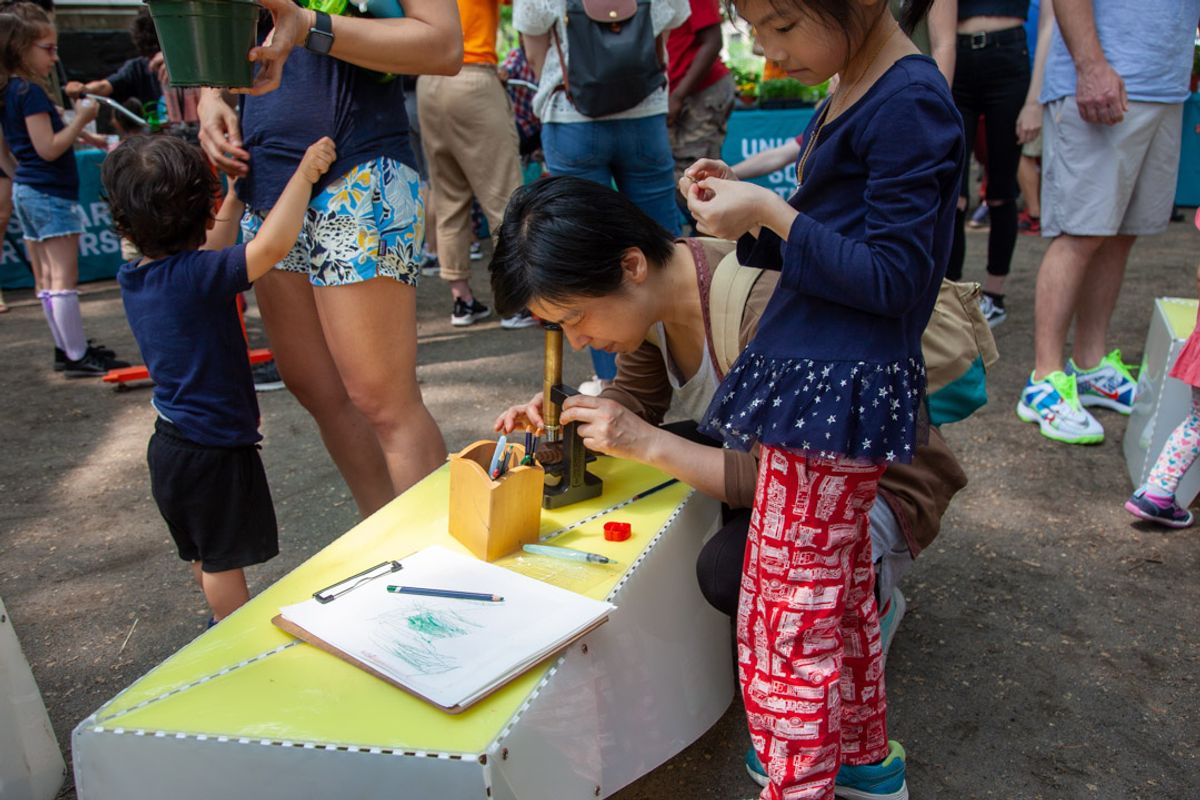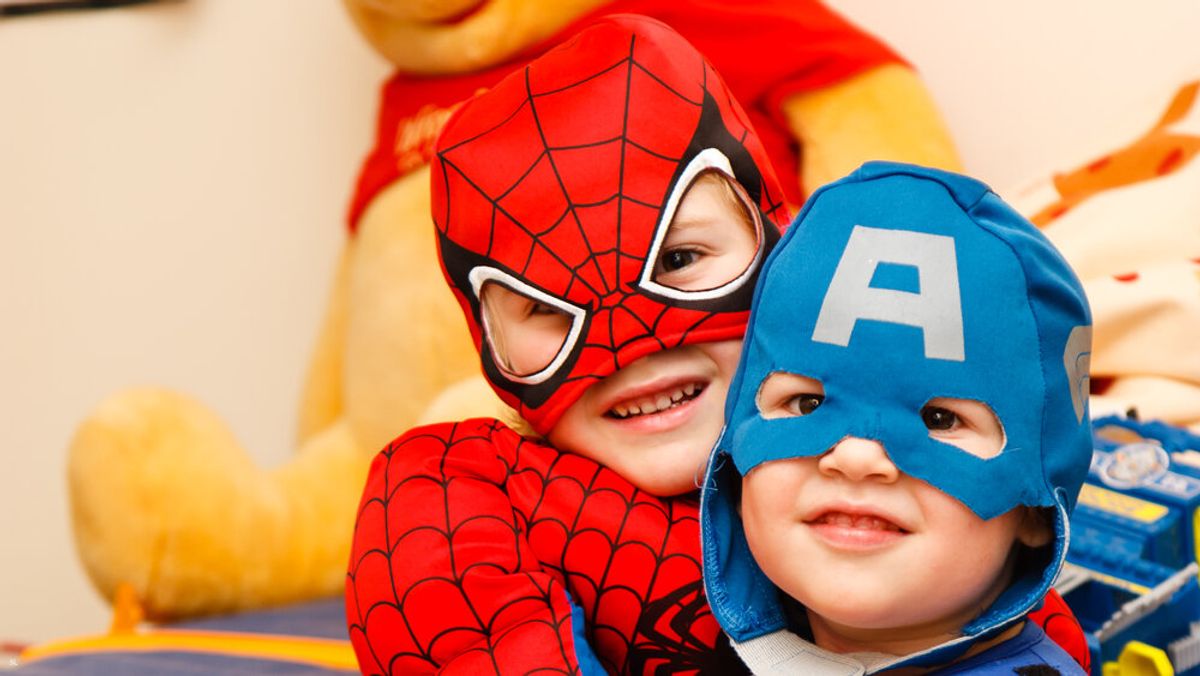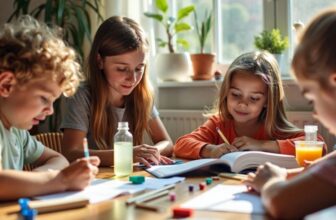
The article ‘Sparking Curiosity: Engaging Educational Activities for Young Minds’ delves into the significance of nurturing curiosity and creativity in children through a variety of educational activities. It underscores the importance of fostering an environment that promotes exploration, integrates STEM into everyday learning, encourages imaginative play, celebrates diversity, and builds foundations for lifelong learning. This piece serves as a guide for educators, parents, and caregivers to create enriching experiences that stimulate young minds and lay the groundwork for a future filled with discovery and innovation.
Key Takeaways
- Open-ended questions and interactive exhibits are crucial in stimulating cognitive development and curiosity in children, leading to a deeper understanding of the world.
- Incorporating STEM activities, such as hands-on experiments and coding, into daily routines can spark children’s interest in science and technology and prepare them for the future.
- Imaginative play and creative arts are fundamental in early childhood, fostering creativity and allowing children to express themselves in unique ways.
- Educational activities that highlight cultural diversity and history enrich children’s perspectives and promote inclusivity and respect for different backgrounds.
- Afterschool enrichment programs and daily activities that nurture curiosity can create lasting memories and build a strong foundation for children’s lifelong love for learning.
Fostering Exploration and Discovery

The Role of Open-Ended Questions in Cognitive Development
Asking open-ended questions is a powerful way to stimulate curiosity and promote cognitive development in pre-schoolers. Encouraging their innate curiosity not only nurtures their thirst for knowledge but also allows them to explore and understand their environment better. By providing guidance and support when they ask questions, we can empower them to find answers and foster their sense of inquiry. This invaluable activity instills in them the significance of exploration and research, igniting a passion for lifelong learning.
Enhancing their creativity in the process, open-ended play is a key component of cognitive and motor skill development. It also promotes social and emotional growth, allowing pre-schoolers to enhance their problem-solving abilities and gain a better understanding of the world around them.
To facilitate this type of learning, consider the following:
- Provide a variety of materials such as cardboard boxes, paper, crayons, and other creative resources.
- Encourage interaction with these materials without specific instructions, fostering imagination and creativity.
- Design play spaces that are conducive to exploration, incorporating elements that prompt active engagement and inquiry.
Creating Environments That Encourage Exploration
To truly foster a sense of discovery, environments must be crafted with the intent to encourage open-ended play. Such spaces are not just physical locations but ecosystems of learning and growth. Here are some key elements to consider:
- Stimulating resources: Incorporate natural elements and interactive exhibits that provide rich opportunities for exploration.
- Challenges: Design age-appropriate challenges within the play environment to help children test their abilities and develop critical thinking skills.
- Defined areas: Establish well-defined spaces that promote exploration, creativity, relaxation, and quality interactions.
A welcoming atmosphere is essential. Spaces should be bright, clean, and inviting to both kids and their families, creating an immersive experience that is conducive to engagement—a cornerstone of effective learning.
Beneficial resources within these environments should reflect the children’s interests and needs, supporting their learning experiences.
Lastly, it’s important to recognize the holistic development that play spaces can foster. They should encourage active engagement, prompt inquiry, and spark the curiosity that drives children to explore, experiment, and interact with their surroundings. By doing so, we lay the groundwork for a lifelong love of learning.
Interactive Exhibits: A Gateway to Learning
Interactive exhibits are more than just displays; they are dynamic environments that invite children to touch, play, and engage with the subject matter. These hands-on experiences are crucial for cementing knowledge and sparking a lifelong interest in learning.
Engagement, collaboration, and accessibility are key factors in the success of interactive exhibits. They must captivate children’s attention and encourage them to explore further:
- Are kids engaging with all the equipment and resources?
- Is there an opportunity for collaborative learning and play?
- Are the exhibits accessible to children of all abilities?
By carefully considering these aspects, educators and designers can create spaces that not only educate but also excite the young mind.
It’s essential to provide a variety of learning invitations within these exhibits to maintain curiosity and interest. From the simplest puzzle to the most complex construction set, each element should challenge and inspire, making every visit a unique adventure.
Integrating STEM into Everyday Learning

Hands-On Experiments to Spark Interest
Engaging young minds with hands-on experiments is a powerful way to spark interest in science and learning. Simple, yet captivating activities can transform your home into a laboratory of wonder and discovery. Here are a few ideas to get started:
- Create a homemade volcano with baking soda and vinegar to demonstrate chemical reactions.
- Mix glue and borax to make slime, exploring the properties of non-Newtonian fluids.
- Build simple machines to understand the basics of physics and mechanics.
These experiments not only entertain but also instill critical thinking and problem-solving skills.
By incorporating these experiments into your daily routine, you create memorable learning experiences that nurture curiosity and development. The joy of discovery through these activities lays the groundwork for a lifelong passion for science and exploration.
Coding for Kids: The Language of the Future
In a world increasingly driven by technology, coding is an essential skill for the next generation. Afterschool coding programs not only introduce children to computer science, but also enhance their logical thinking and problem-solving abilities. As they tackle coding challenges, kids learn to think creatively and bring their ideas to life on digital platforms.
- Code.org offers interactive tutorials and games for beginners and experienced young coders.
- Through playful activities, children learn programming fundamentals.
- Creating interactive stories and games reinforces their learning experience.
By engaging with coding from a young age, children are equipped with the tools to navigate and shape the future of technology.
The importance of coding extends beyond the screen; it fosters a mindset of exploration and innovation. As children learn to code, they are also learning the language of the future, preparing them for a world where digital literacy is as fundamental as reading and writing.
Mind Mapping: Visualizing Complex Concepts
Mind mapping is a powerful tool for visualizing complex concepts, enabling students to see the connections between ideas and fostering a deeper understanding of the subject matter. It encourages the exploration of relationships and patterns, making it an invaluable asset in the learning process.
- Mind maps can be used to:
- Organize thoughts and ideas
- Enhance memory retention
- Encourage creative problem-solving
- Facilitate group brainstorming sessions
By representing information visually, mind maps cater to visual learners and can make abstract or challenging topics more accessible. > Mind mapping not only aids in learning but also equips students with a skill that is applicable across various disciplines and real-world scenarios.
Cultivating Creativity Through Play

The Importance of Imaginative Play in Early Childhood
Imaginative play is a powerful tool in the development of young children, providing a unique platform for cognitive, social, and emotional growth. Through imaginative play, children learn to navigate complex social interactions, developing empathy and understanding by stepping into the shoes of others.
Creativity is not just about art and music; it’s about thinking in new and innovative ways. By engaging in imaginative play, children exercise their creative muscles, imagining new worlds and scenarios. This form of play allows them to experiment with different outcomes, enhancing their problem-solving skills and adaptability.
- Active play: Physical activities like crawling, climbing, and jumping.
- Imaginative play: Creating situations and characters using their imagination.
- Sensory play: Engaging the senses, such as sight and touch.
- Social play: Communicating and cooperating with others.
Offering opportunities for open-ended play allows children to explore and express themselves freely, fostering a sense of independence and confidence. This kind of play is essential for allowing children to discover their interests and passions.
Parents and educators can support imaginative play by providing a variety of materials and spaces that encourage exploration. From dress-up clothes to building blocks, the resources that can spark a child’s imagination are endless. It’s important to create an environment where children feel safe to express their ideas and where their creativity is celebrated.
Designing Play Spaces That Inspire Curiosity
Creating a play space that stimulates learning is an art that combines architecture, education, and psychology. Every element should serve as a catalyst for discovery, from the colors and textures that invite touch to the spatial arrangements that encourage movement and interaction. These environments are more than mere playgrounds; they are incubators for creativity, critical thinking, and an insatiable curiosity.
Play spaces are transformative areas where children can engage in a variety of activities that support holistic development and learning.
When considering the design of play spaces, it’s essential to focus on:
- Holistic development: Spaces should promote social, cognitive, and emotional growth.
- Active engagement: Encourage children to explore and interact with their surroundings.
- Inquiry and exploration: A well-designed space should naturally provoke children’s curiosity, leading them to ask questions and seek new discoveries.
Whether indoors or outdoors, play spaces must be welcoming and defined, offering a blend of resources that reflect the children’s interests and developmental needs. The ultimate goal is to create an atmosphere where play and learning are seamlessly integrated, nurturing the seeds of lifelong curiosity.
Art and Craft Activities to Enhance Creative Expression
Unleashing a child’s creativity can be as simple as providing a space brimming with art supplies. Set up a designated art corner with essentials like colored paper, markers, paint, and glue, along with recycled materials for an eco-friendly twist. Encourage children to dive into their imagination, creating anything from paintings to sculptures.
- Painting and drawing sessions offer a canvas for self-expression.
- DIY craft projects foster problem-solving and creativity.
- Displaying finished art boosts confidence and acknowledges effort.
Engaging in art and craft activities is not just about the end product; it’s a journey of self-discovery and expression. It’s where fine motor skills meet the boundless realm of imagination.
To truly enhance creative expression, celebrate each artistic endeavor. Display their art on a bulletin board or the fridge, and share words of encouragement. This recognition not only boosts their confidence but also motivates them to explore their imagination and creativity further. By valuing their artistic efforts, you nurture a passion that could bloom into a lifelong love for the arts.
Celebrating Diversity and History

Integrating Cultural Activities into Learning
Incorporating cultural activities into the educational journey of young learners is a powerful way to broaden their horizons and foster a deep appreciation for the diverse world they inhabit. These activities serve as a bridge, connecting students with the rich tapestry of human heritage and traditions.
- Exposure to different cultures through art, music, and storytelling
- Participation in cultural festivals and events
- Learning about historical figures and milestones from various cultures
By engaging with cultural activities, children develop a sense of global citizenship and empathy, which are crucial in today’s interconnected world.
It is essential to create a learning environment that is not only inclusive but also celebratory of cultural diversity. This can be achieved by integrating cultural artifacts, resources, and stories into the curriculum, which can stimulate curiosity and encourage respectful dialogue among students. The ultimate goal is to cultivate an educational atmosphere where cultural learning is not an isolated event but a continuous, enriching part of the learning experience.
Black History Month: Educational Projects and Resources
Black History Month offers a profound opportunity to honor the contributions of Black Americans across various fields, including science, technology, engineering, and mathematics (STEM). Engaging students in activities that highlight these achievements can inspire and educate. Here are some ways to incorporate Black History Month into educational settings:
- Utilize crafts and resources that celebrate the lives of Black astronauts, scientists, and leaders.
- Introduce hands-on experiments and lesson plans that connect students with the legacy of Black innovators.
- Encourage exploration of NASA’s achievements through the lens of Black history, fostering a deeper understanding of their impact.
By integrating these activities, educators can create a rich tapestry of learning experiences that not only pay tribute to Black History Month but also spark a lasting curiosity in young minds.
It’s essential to provide students with a variety of resources that cater to different age groups, from K-4 to 9-12, ensuring that each student can engage at an appropriate level. Collaboration with partners and the use of authentic content can further enhance the learning experience, making the celebration of Black History Month a dynamic and inclusive event.
Books and Stories That Open Windows to the World
In the journey of learning, books and stories serve as portals to vast worlds, both real and imagined. They provide a unique opportunity for children to experience life through the eyes of others, fostering empathy and a deeper understanding of diverse cultures and perspectives.
- Encourage children to read or listen to stories from different cultures and time periods.
- Discuss the characters, settings, and moral lessons to enhance comprehension and critical thinking.
- Use storytelling as a tool to expand vocabulary and improve communication skills.
By introducing young minds to a variety of narratives, we not only broaden their horizons but also plant the seeds for a lifelong love of reading. Engaging with literature allows children to explore complex emotions and situations in a safe environment, which is essential for their emotional development.
The magic of storytelling extends beyond mere entertainment; it is a powerful educational tool. When children are invited to create their own tales, they engage in an act of creation that hones their writing and artistic skills. Whether they are crafting a short story, a poem, or a comic strip, they are learning to express themselves and their unique view of the world.
Building Foundations for Lifelong Learning

The Impact of Afterschool Enrichment Programs
Afterschool enrichment programs serve as a pivotal extension of traditional classroom learning. They provide a structured yet flexible environment where children can delve into new interests and develop essential life skills. These programs are more than just a means to occupy time; they are a bridge to holistic development, nurturing the intellectual, social, and emotional facets of young learners.
Holistic development is at the heart of these programs, which often include:
- STEM activities that make science and technology approachable and fun
- Arts and crafts that foster creativity and fine motor skills
- Sports and physical activities that promote teamwork and healthy living
- Language and cultural experiences that broaden perspectives
The transformative potential of afterschool programs lies in their ability to turn every activity into an opportunity for growth and discovery.
By engaging in a diverse range of programs that blend fun with learning, children are encouraged to explore their passions and cultivate a genuine enthusiasm for knowledge. This lays the groundwork for a future filled with curiosity, creativity, and endless possibilities.
Encouraging a Love for Science and Discovery
Nurturing a love for science and discovery in children can be a transformative experience, setting the stage for a lifelong passion for learning. By integrating STEM activities into afterschool routines, children gain hands-on experience that goes beyond traditional textbook learning. They learn to experiment, solve problems, and embrace the wonders of discovery.
- Afterschool coding programs introduce children to the language of the future.
- Science experiments offer a tangible connection to the principles they learn in class.
- Engineering challenges encourage creative problem-solving and innovation.
Encouraging children to engage in STEM activities after school can stimulate curiosity and foster a deep-seated interest in these critical fields. It’s about creating moments of wonder that spark a desire to learn more.
Incorporating educational activities into daily routines can create lasting memories and nurture development. Whether it’s conducting simple experiments, embarking on nature treasure hunts, or getting creative with art projects, the goal is to engage and inspire children in a way that feels like play. This approach helps to build foundations for a future where science and discovery are not just subjects, but pathways to understanding the world.
Nurturing Curiosity Through Daily Routines and Activities
Curiosity can be woven into the fabric of daily life with ease and joy. Incorporating educational activities into daily routines is not just about learning; it’s about creating a bond and shared memories. Simple activities like cooking can become a science lesson about measurements and chemical reactions, while a walk in the park can turn into a nature scavenger hunt.
- Encourage your child to ask why and how questions during these activities.
- Provide resources that spur creativity, such as art supplies for spontaneous crafting.
- Use everyday moments to explore concepts, like sorting laundry by color and size.
By making learning a natural part of daily life, you help your child see the wonder in the world around them.
Remember, the goal is to nurture a mindset of inquiry and discovery. Whether it’s through storytelling, imaginative play, or hands-on experiments, each day offers countless opportunities to spark curiosity. Embrace these moments, and watch as your child’s love for learning grows.
Conclusion
In the quest to ignite the flames of curiosity and creativity in young minds, it is clear that a multifaceted approach is essential. From the imaginative play that lays the foundation for cognitive development in preschoolers to the complex problem-solving skills honed through STEM activities, each educational experience is a vital piece of the puzzle. Encouraging children to ask open-ended questions, engage in hands-on learning, and explore the world around them are not just activities but investments in their future. As we foster environments that celebrate inquiry and imagination, we prepare our children for a lifetime of discovery and innovation. Let us continue to provide diverse programs that blend fun with learning, ensuring that the spark of curiosity, once ignited, continues to burn brightly as a guiding light towards a future filled with endless possibilities.
Frequently Asked Questions
How do open-ended questions benefit cognitive development in young children?
Asking open-ended questions stimulates curiosity and promotes cognitive development by encouraging children to think deeply, articulate their thoughts, and explore various outcomes. This process nurtures their thirst for knowledge and helps them understand their environment more profoundly.
What role do interactive exhibits play in a child’s learning experience?
Interactive exhibits serve as a gateway to learning by providing sensory-rich environments where children can engage with concepts hands-on. This not only enhances their critical thinking skills but also inspires creativity and imaginative thinking.
Why is STEM education important for children, and how can it be integrated into everyday learning?
STEM education is crucial as it equips children with the skills needed for future innovation, such as problem-solving, logical reasoning, and technological literacy. Integrating STEM into everyday learning can be achieved through hands-on experiments, coding activities, and practical applications of math and science.
How does imaginative play contribute to a child’s development?
Imaginative play is vital for early childhood development as it fosters creativity, social skills, and emotional intelligence. It allows children to experiment with different roles, scenarios, and ideas, enhancing their ability to think creatively and empathize with others.
What are some ways to celebrate diversity and history with educational activities?
Celebrating diversity and history can be done through cultural activities, themed educational projects like those for Black History Month, and reading books that provide insights into different cultures and historical events. These activities help children understand and appreciate the rich tapestry of the world’s heritage.
How can afterschool enrichment programs impact a child’s love for learning?
Afterschool enrichment programs provide diverse opportunities for fun and learning, which can captivate children’s minds and lay the groundwork for a future filled with curiosity and creativity. These programs often include STEM activities, coding, and other engaging experiences that foster a love for science and discovery.






